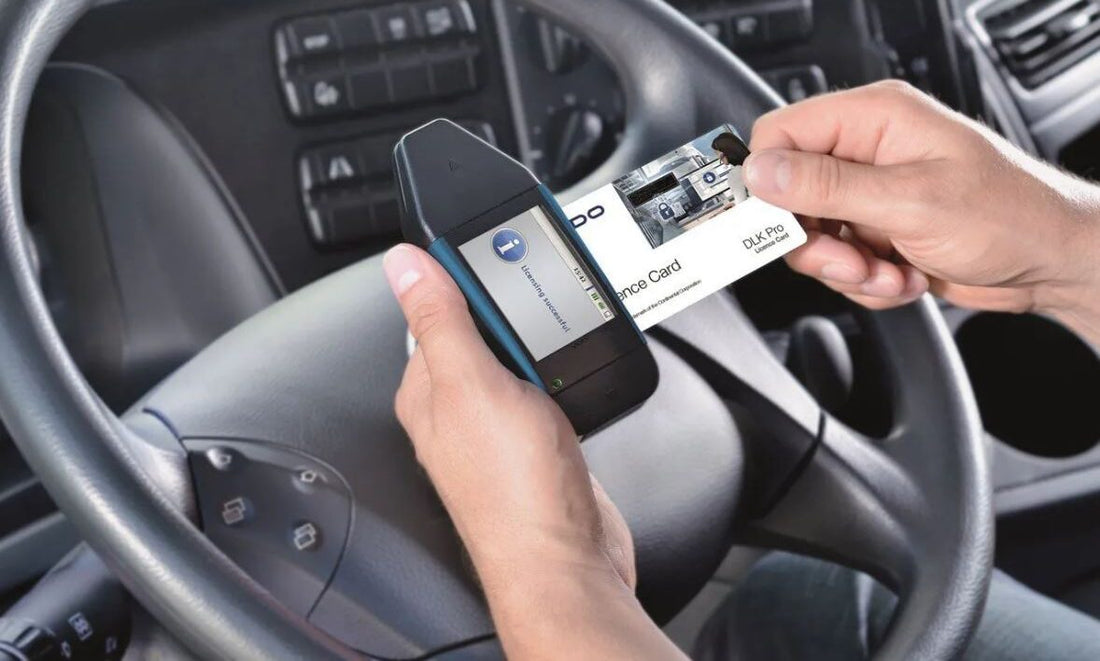
Analogue Tachograph vs. Digital Tachograph
Share
Tachograph systems have been a mandatory component of any transport or haulage vehicle in the EU since 1986, and in those 30 years, the way technology has developed has significantly shaped vehicle compliance and the working hour regulations for truck drivers. From the 1st May 2006, every relevant vehicle has to be fitted with digital tachograph heads; however, prior to this point, the vast majority of vehicles had analogue tachograph facilities installed. Both iterations of the tachograph system have their advantages and disadvantages, which will be covered below.
Analogue Tachograph Pros and Cons
An analogue tachograph disc gradually rotates throughout the day, with a stylus marking the wax-coated surface and one full rotation taking place over a period of 24 hours. As a result of this, the discs need to be changed manually when they have run their course, otherwise the system will continue to draw lines over the initial trace. The problem with this lies in the fact that there is no facility to inform the driver of when this is, and yet it is an infringement of EU Regulation 561/2006 to use an analogue tachograph disc for longer than it can accommodate.
Analogue tachograph records can be easily tampered with by interfering with the arm or marker in various ways, disabling the system by short-circuiting it, or even replacing the power supply with one which has a blown fuse in order to prevent it working at all. Drivers can easily claim that they simply ‘forgot’ to insert the analogue tachograph disc, swap discs with other drivers, or enter fabricated information on an additional chart to give the appearance of a second driver having taken over – a trick known as ‘ghosting’.
Despite this, the data of an analogue tachograph is more easily interpreted given its visual representation than digital tachograph data. It is also fairly simple to spot any attempts of trying to alter analogue tachograph records, whereas digital tachograph data can still be tampered with and is much harder to identify.
Digital Tachograph Pros and Cons
An immediate benefit of the digital tachograph is that it has officially succeeded the deprecated analogue tachograph, and is therefore considered to be the current technology. It requires the tachograph head, a digital driver card and a unit attached to the gearbox. Everything is stored digitally and processed automatically by digital tachograph software, and data is locked to specific company cards in case the vehicle changes hands at any point. The margin for interpretation error is significantly reduced, and data cannot be changed or deleted.
Despite the fact that any potential infringements can be detected instantly by the digital tachograph software, without the software, computer and a digital card reader available to work in tandem, the data is incredibly challenging to understand. There is also no way of indicating start and end cities, only countries, making it more difficult for any legal agencies to be precise about the nature of the incident. Finally, it is nigh-on impossible to identify any card-swapping between drivers, whereas with an analogue tachograph this can be more easily done by comparing the styles of handwriting.
Overall, both systems have ways in which they can be compromised, but more often than not it is down to the age of the vehicle as to whether an analogue or digital tachograph is used. TachPro sell products for both, including analogue and digital tachograph rolls, as well as digital tachograph software. Browse our store today and make sure you keep stocked up on essential supplies!



